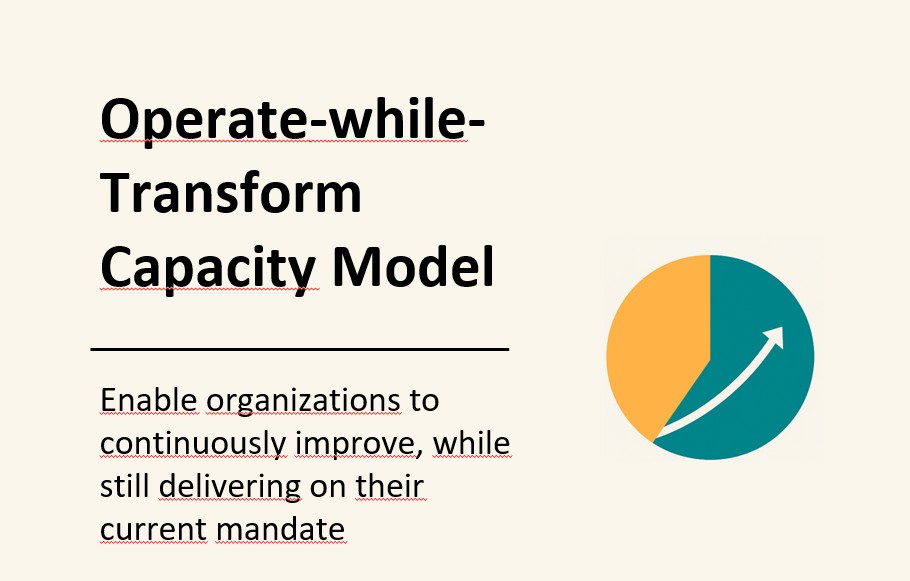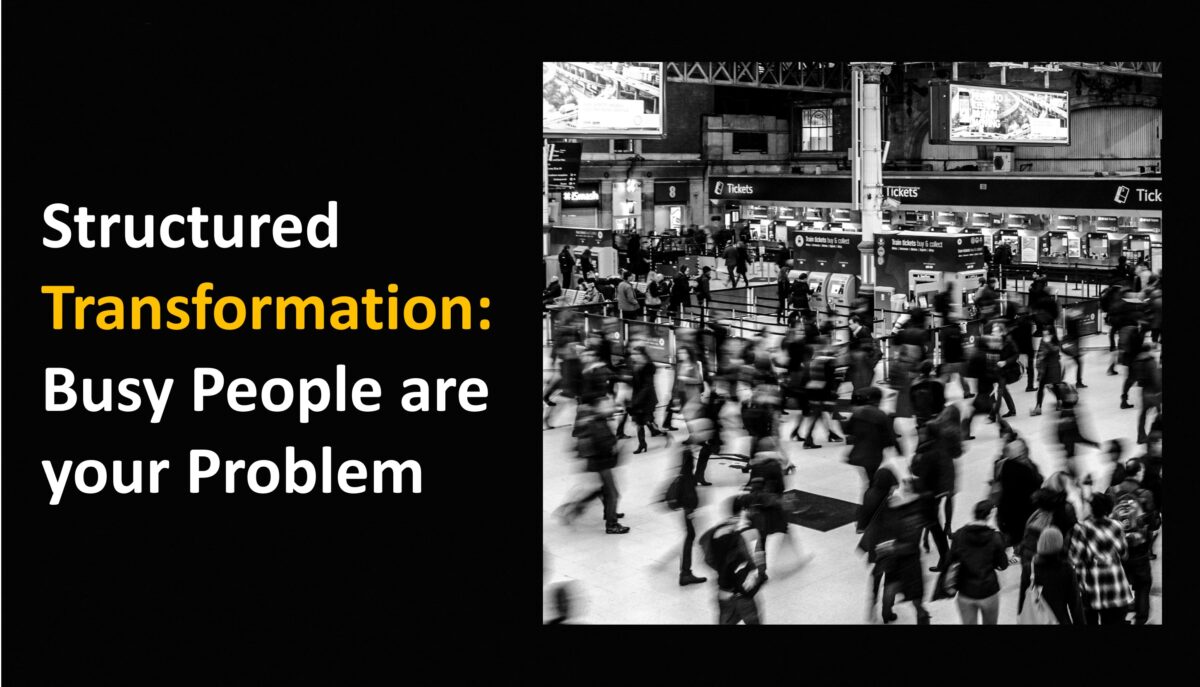Transformation doesn’t fail because of strategy. It fails because the business can’t execute change while keeping day-to-day operations running.
I’ve seen this pattern again and again:
- Management is already at 120% capacity.
- A major transformation or integration lands on top.
- Leadership is expected to run BAU and lead the program. The result? Delays, firefighting, stalled projects, missed synergies — and, most critically, lost business performance.
That’s why I built the Operate-while-Transform capacity model. It protects BAU while accelerating transformation.
The Core Idea
Business-as-usual must not suffer because of transformation. Shareholders expect performance and change. To deliver both, we need a deliberate capacity model that frees bandwidth for transformation without risking revenue, customers, or employees.
How it Works
1. Capacity Scan Map management workload. Where is leadership consumed by routine? Where is true change capability hidden?
2. Offload Routine Work Shift recurring or transactional activities (reporting, approvals, admin) downward or outward. Create air cover for managers.
3. Sharpen Decision Forums Redesign meeting cadence and governance so leaders spend time on decisions and priorities, not updates or firefighting.
4. External Program Muscle Bring in experienced transformation leaders to drive structure, speed, and orchestration. Execution discipline comes from outside, not from overstretched insiders.
5. BAU Health Check Track operational KPIs (OTD, revenue, customer metrics) in parallel with transformation KPIs. If BAU slips, you re-balance early.
What It Takes
Even the best-designed capacity model fails without top management’s true commitment.
- Leaders must prioritize change alongside BAU, not treat it as optional.
- They must protect time and attention, resisting the temptation to drown the program in unnecessary meetings, reviews, or politics.
- They must walk the talk: if management drags its feet, employees will too.
In short: Operate-while-Transform works only if leaders want it to work.
Why It Works
- Speed: Freed-up capacity accelerates execution.
- Focus: Leaders can actually lead transformation instead of juggling tasks.
- Security: BAU KPIs stay in view — ensuring no loss of revenue or customers.
- ROI: Faster execution means faster synergies, earlier cash impact, and higher deal value.
The Payoff
When you protect BAU and accelerate transformation, value lands earlier:
- Synergies realized faster
- Costs reduced earlier
- Growth captured without losing customers
- Employees stay engaged — because daily work doesn’t collapse under the weight of change
💡 Operate-while-Transform isn’t about working harder. It’s about designing capacity deliberately so transformation can succeed without breaking the business you’re transforming.








